Clipart tagged: ‘nocturnal birds’

Horn-billed Auk in Summer
"Ceratorhina monocerata. Unicorn Auk. Horn-bill Auk. Adults in summer: Bill orange-yellow. Culmen and…

Horn-billed Auk in Winter
"Ceratorhina monocerata. Unicorn Auk. Horn-bill Auk. In winter: Bill orange-yellow. Culmen and base…

Young Horn-billed Auk
"Ceratorhina monocerata. Unicorn Auk. Horn-bill Auk. Young: Bill like that of adults in winter, lacking…
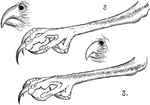
The Beaks and Claws of a Burrowing Owl
"Speotyto. Burrowing Owls. tarsi long, about twice as long as the middle toe without its claw, very…
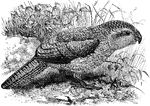
Kakapo
"Stringops habroptilus, the Kakapo or Tarapo of New Zealand has sap-green upper parts, with yellow middles…
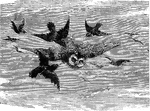
The Mobbing of an Owl
An adult owl being mobbed by a group of smaller birds. Mobbing occurs when smaller birds, in fear, will…

Barred Owl
"Strix nebulosa. Barred Owl. Hoot Owl. American Wood Owl. Toes fully feathered, nearly or quite to the…
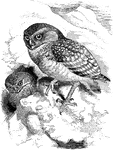
Two Burrowing Owls by the Mountains
"Speotyto cunicularia, the Burrowing Owl, a comparatively long-legged and short -winged bird with incomplete…
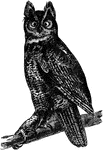
Great Horned Owl
"Bubo virginianus. Great Horned Owl. Hoot Owl. Cat Owl. Distinguished by its large size and conspicuous…
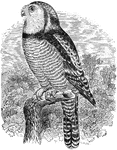
Hawk Owl
"Surnia funerea. American Hawk Owl. Day Owl. Bill and eyes yellow; claws brownish-black. Upper parts…

Screech Owl
Strix flammea, the nocturnal White Screech-, or Barn Owl, is orange-buff above, with brown, grey and…
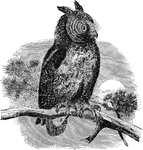
Screech Owl
Scops. Little Horned Owls. Screech Owls. Like the miniature Bubo in form (all our species under a foot…
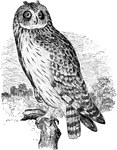
Short-eared Owl
"Asio accipitrinus. Short-eared Owl. Marsh Owl. Ear-tufts inconspicuous, much shorter than middle toe…
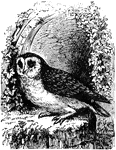
Small Barn Owls
"Aluco flammeus pratincola. Barn Owl. above, including upper surfaces of wings and tail, tawny, fulvous,…
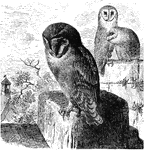
Barn Owls
"Aluco flammeus pratincola. Barn Owl. above, including upper surfaces of wings and tail, tawny, fulvous,…
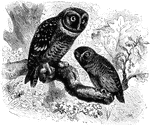
Saw-whet and Sparrow Owls
"Nyctala - Saw-whet Owls. Skull and ear-parts highly unsymmetrical, the the latter of great size, and…
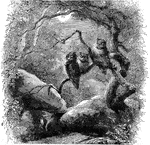
Screech Owls
"Scops. Little Horned Owls. Screech Owls. Like the miniature Bubo in form (all our species under a foot…
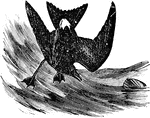
Leach's Petrel
"Cymochorea leucorrhoa. Leach's Petrel. White-rumped Petrel. Coloration as in the last species (pygmy…
